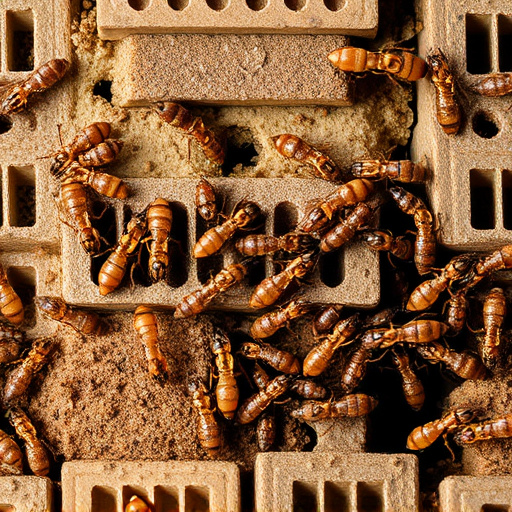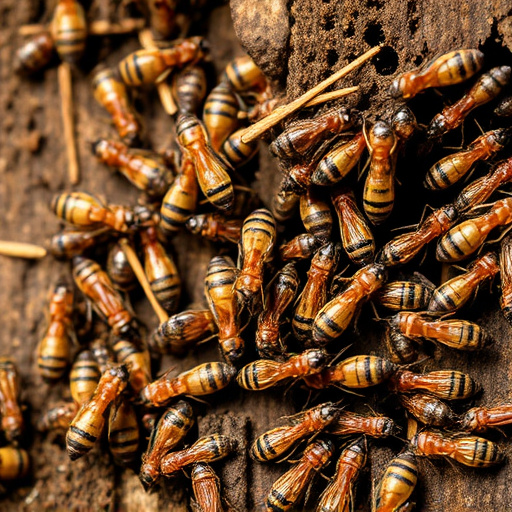In the Catalina Foothills near Tucson, understanding termite behavior is crucial for effective prevention due to the region's warm, dry climate that supports both subterranean and drywood termites. Changing weather patterns from climate change require dynamic strategies, emphasizing the importance of sealing entry points, maintaining ventilation, regular inspections, and an integrated pest management (IPM) approach. Regular professional inspections during spring, proper moisture control, and eco-friendly termite control Tucson methods, coupled with strict building codes, contribute to a balanced approach that protects homes while preserving the local ecosystem.
In the scenic Catalina Foothills region near Tucson, Arizona, understanding how climate influences termite prevention is key to safeguarding homes. This article explores the intricate relationship between weather patterns and termite behavior, offering insights into effective strategies for termite control in Tucson. From seasonal considerations to innovative management techniques, we delve into what makes termiticides in Tucson both essential and nuanced. Discover expert tips for a robust termite prevention plan tailored to this unique environment.
- Understanding Termite Behavior in the Catalina Foothills Region
- The Impact of Climate on Termite Population and Activity
- Effective Termite Prevention Strategies for Tucson Homes
- Seasonal Considerations for Termite Control in Arizona
- Innovative Techniques in Termite Management
- Community Efforts and Regulations for Sustainable Termite Prevention
Understanding Termite Behavior in the Catalina Foothills Region

In the Catalina Foothills region, understanding termite behavior is crucial for effective termite prevention. Termites are social insects that live in colonies and feed on cellulose-rich materials, often found in wooden structures. Their presence in this area is significant due to the warm, dry climate—ideal conditions for their proliferation. During the summer months, when temperatures rise above 85°F (29°C), termites become more active, intensifying their search for food and new nesting sites. This period necessitates heightened termite control Tucson measures, as the pests are most abundant and destructive then.
The behavior of termites in Catalina Foothills also varies by species. The most common species include desert subterranean termites and drywood termites. Desert subterranean termites build extensive tunnel systems beneath the ground, often entering structures through cracks or gaps less than 1/16th of an inch wide. In contrast, drywood termites nest above ground level in wooden structures, preferring dry wood and leaving distinctive frass (termite droppings) behind. Recognizing these behaviors enables homeowners to implement targeted termite prevention strategies, such as sealing entry points, maintaining proper ventilation, and regular inspections, thereby mitigating the risks associated with these persistent pests.
The Impact of Climate on Termite Population and Activity

The climate in Catalina Foothills, characterized by its warm, dry summers and mild winters, significantly influences termite populations and their activity levels. Termites thrive in moist environments, so the region’s relatively low humidity can act as a natural barrier against these pests. However, recent climate changes have led to more unpredictable weather patterns, including increased rainfall during certain seasons. This shift in precipitation has altered termite behavior and distribution, with some species becoming more active and expanding their habitats into new areas.
For instance, the desert-adapted Subterranean Termites, common in Tucson and surrounding regions, are now more prevalent due to improved moisture access. Conversely, dry spells can cause termites to seek water sources, potentially leading them to structures. This climate-driven behavior makes termite control in Tucson a dynamic process, requiring professionals to adapt their strategies. Understanding these climatic influences is crucial for effective termite prevention and management in the area.
Effective Termite Prevention Strategies for Tucson Homes

In Catalina Foothills, effective termite prevention strategies are paramount for homeowners in Tucson due to the region’s unique climate and the persistent threat of termite infestations. The first line of defense involves understanding the species prevalent in the area, such as the Western Subterfuge Termite, which thrives in the warm, dry conditions characteristic of Tucson’s desert environment. Regular inspections by certified professionals are crucial to identifying early signs of an infestation, enabling prompt intervention.
Prevention measures should also include eliminating potential food sources by removing wood-based materials from the ground and ensuring proper ventilation throughout the home. Treating soil with termiticides and installing physical barriers like metal mesh can create a defensive layer against termites. Additionally, maintaining a buffer zone around the house by clearing debris and overhanging branches can disrupt termite trails and deter their entry. For optimal termite control Tucson residents should adopt an integrated pest management (IPM) approach, combining these preventive tactics with regular monitoring and treatment as needed.
Seasonal Considerations for Termite Control in Arizona

In Arizona, including the Catalina Foothills region near Tucson, seasonal variations significantly influence termite activity and control strategies. Understanding these patterns is crucial for effective termite prevention. Spring and summer months are particularly active periods for termites as they emerge from their hibernation and start building colonies, making it a critical time for termite control in Tucson. During these seasons, the increased humidity and warmer temperatures create ideal conditions for termite growth and reproduction.
As such, seasonal considerations play a vital role in termite control plans. Professional pest control services in Tucson often recommend regular inspections during spring to detect any early signs of infestation. This proactive approach allows for prompt treatment, which is essential as termites can quickly cause substantial damage to structures. Additionally, maintaining proper moisture levels and sealing potential entry points are year-round practices to prevent termites from establishing colonies.
Innovative Techniques in Termite Management

In the pursuit of effective termite prevention in Catalina Foothills, innovative techniques have emerged as game-changers in the field of termite control Tucson. Beyond traditional methods, modern solutions leverage advanced technologies and eco-friendly practices to combat these relentless pests. One such approach involves the strategic use of natural predators like certain insect species that target termites, offering a sustainable alternative to chemical-heavy treatments.
Additionally, researchers have developed sophisticated monitoring systems that employ sensors and data analytics to detect termite activity early. These innovative tools allow for precise interventions, minimizing damage and reducing the need for extensive chemical applications. As the demand for environmentally conscious termite control Tucson grows, these cutting-edge techniques are transforming the way experts approach termite prevention in this region, ensuring homes and properties remain protected while preserving the delicate balance of nature.
Community Efforts and Regulations for Sustainable Termite Prevention

In Catalina Foothills, community efforts and local regulations play a pivotal role in sustainable termite prevention. The region’s unique ecosystem demands a proactive approach to protect both homes and the surrounding natural environment. Many neighborhood associations and local governments collaborate to implement strict building codes and guidelines for new constructions. These measures include mandatory inspections, use of resistant materials, and adoption of innovative termite control Tucson methods that minimize chemical usage.
Homeowners are encouraged to participate in these initiatives by staying informed about local regulations and employing eco-friendly practices. Regular inspections by professional pest control services specializing in termite control Tucson are essential to identifying potential issues early. By combining community involvement, stringent regulations, and modern control techniques, Catalina Foothills strives to achieve a balanced approach to termite prevention that ensures both the integrity of structures and the preservation of its distinctive natural beauty.
In the Catalina Foothills region, understanding how climate influences termite behavior is key to effective termite prevention. The unique environmental conditions dictate the timing and intensity of termite activity, demanding tailored strategies for termite control in Tucson. By implementing seasonal considerations, innovative techniques, and community-driven regulations, homeowners can significantly mitigate risks associated with termites. Adopting these comprehensive measures ensures a robust defense against termites, promoting sustainable protection for Tucson homes. Remember that, when it comes to termite control Tucson, staying informed and proactive is the best line of defense.
